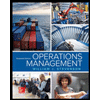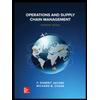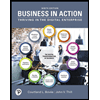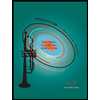1. A major supermarket chain has decided to sub-contract production of ready-to-eat sandwiches to your production plant. Your plant can make three kinds of sand- wiches, each of which take the following amounts of raw ingredients (measured in grams) to produce: Sandwich Chicken Cheese Lettuce 45 0 25 20 0 30 Chicken Salad Chicken Club Cheese and salad 15 10 20 Tomato Bread 60 90 60 Chicken Salad Chicken Club Cheese and Salad 15 10 13 The total amount of time (measured in minutes) to make one of each sandwich is listed below, together with the price that the supermarket will pay to purchase one of each: Sandwich | Time to Make Price 2.8 £1.25 4.8 £1.65 1.3 £0.95 For the sake of this problem you can treat ingredients used and number of sandwiches made as continuous quantities we could perhaps think of this as the average made per day over a longer period, in which case making 100.43 sandwiches per day would still make sense. (a) Suppose that you have 5000g of chicken, 2500g of cheese, 1500g of lettuce 6000g of bread, and 500g of tomato available from your supplier each day, and a total of 120 person-hours (= 7200 total minutes) of labour available each day. Write a linear program to find a production plan that maximises your daily revenue. (b) Suppose now that everything is exactly as in the previous question, but now (due an agreement with a supplier) you can purchase additional lettuce beyond the 1500g you have available at a cost of £0.03 per gram and, conversely, if you use less than 1500g you can sell any you have left over for the same price of £0.03 per gram. Describe how to modify your program from the previous question to calculate the best profit. Note: when calculating profit, you may ignore the cost of the other raw in- gredients already on hand (suppose we have already purchased them, and so their costs have already been fixed). However, you should include the cost or profit from buying extra lettuce (beyond the 1500g you already have) or selling lettuce (leftover from the 1500g you already have).
1. A major supermarket chain has decided to sub-contract production of ready-to-eat sandwiches to your production plant. Your plant can make three kinds of sand- wiches, each of which take the following amounts of raw ingredients (measured in grams) to produce: Sandwich Chicken Cheese Lettuce 45 0 25 20 0 30 Chicken Salad Chicken Club Cheese and salad 15 10 20 Tomato Bread 60 90 60 Chicken Salad Chicken Club Cheese and Salad 15 10 13 The total amount of time (measured in minutes) to make one of each sandwich is listed below, together with the price that the supermarket will pay to purchase one of each: Sandwich | Time to Make Price 2.8 £1.25 4.8 £1.65 1.3 £0.95 For the sake of this problem you can treat ingredients used and number of sandwiches made as continuous quantities we could perhaps think of this as the average made per day over a longer period, in which case making 100.43 sandwiches per day would still make sense. (a) Suppose that you have 5000g of chicken, 2500g of cheese, 1500g of lettuce 6000g of bread, and 500g of tomato available from your supplier each day, and a total of 120 person-hours (= 7200 total minutes) of labour available each day. Write a linear program to find a production plan that maximises your daily revenue. (b) Suppose now that everything is exactly as in the previous question, but now (due an agreement with a supplier) you can purchase additional lettuce beyond the 1500g you have available at a cost of £0.03 per gram and, conversely, if you use less than 1500g you can sell any you have left over for the same price of £0.03 per gram. Describe how to modify your program from the previous question to calculate the best profit. Note: when calculating profit, you may ignore the cost of the other raw in- gredients already on hand (suppose we have already purchased them, and so their costs have already been fixed). However, you should include the cost or profit from buying extra lettuce (beyond the 1500g you already have) or selling lettuce (leftover from the 1500g you already have).
Practical Management Science
6th Edition
ISBN:9781337406659
Author:WINSTON, Wayne L.
Publisher:WINSTON, Wayne L.
Chapter2: Introduction To Spreadsheet Modeling
Section: Chapter Questions
Problem 20P: Julie James is opening a lemonade stand. She believes the fixed cost per week of running the stand...
Related questions
Question

Transcribed Image Text:1. A major supermarket chain has decided to sub-contract production of ready-to-eat
sandwiches to your production plant. Your plant can make three kinds of sand-
wiches, each of which take the following amounts of raw ingredients (measured in
grams) to produce:
Sandwich | Chicken Cheese Lettuce Tomato Bread
45
15
25
10
13
Chicken Salad
Chicken Club
Cheese and salad
920
0
20
30
Chicken Salad
Chicken Club
Cheese and Salad
15
10
20
The total amount of time (measured in minutes) to make one of each sandwich is
listed below, together with the price that the supermarket will pay to purchase one
of each:
Sandwich | Time to Make Price
2.8
4.8
1.3
60
90
60
£1.25
£1.65
£0.95
For the sake of this problem you can treat ingredients used and number of sandwiches
made as continuous quantities we could perhaps think of this as the average made
per day over a longer period, in which case making 100.43 sandwiches per day would
still make sense.
(a) Suppose that you have 5000g of chicken, 2500g of cheese, 1500g of lettuce
6000g of bread, and 500g of tomato available from your supplier each day, and
a total of 120 person-hours (= 7200 total minutes) of labour available each day.
Write a linear program to find a production plan that maximises your daily.....
revenue.
(b) Suppose now that everything is exactly as in the previous question, but now
(due an agreement with a supplier) you can purchase additional lettuce beyond
the 1500g you have available at a cost of £0.03 per gram and, conversely, if
you use less than 1500g you can sell any you have left over for the same price
of £0.03 per gram.Describe how to modify your program from the previous
question to calculate the best profit.
Note: when calculating profit, you may ignore the cost of the other raw in-
gredients already on hand (suppose we have already purchased them, and so
their costs have already been fixed). However, you should include the cost or
profit from buying extra lettuce (beyond the 1500g you already have) or selling
lettuce (leftover from the 1500g you already have).
Expert Solution
This question has been solved!
Explore an expertly crafted, step-by-step solution for a thorough understanding of key concepts.
Step by step
Solved in 2 steps with 2 images

Recommended textbooks for you

Practical Management Science
Operations Management
ISBN:
9781337406659
Author:
WINSTON, Wayne L.
Publisher:
Cengage,

Operations Management
Operations Management
ISBN:
9781259667473
Author:
William J Stevenson
Publisher:
McGraw-Hill Education

Operations and Supply Chain Management (Mcgraw-hi…
Operations Management
ISBN:
9781259666100
Author:
F. Robert Jacobs, Richard B Chase
Publisher:
McGraw-Hill Education

Practical Management Science
Operations Management
ISBN:
9781337406659
Author:
WINSTON, Wayne L.
Publisher:
Cengage,

Operations Management
Operations Management
ISBN:
9781259667473
Author:
William J Stevenson
Publisher:
McGraw-Hill Education

Operations and Supply Chain Management (Mcgraw-hi…
Operations Management
ISBN:
9781259666100
Author:
F. Robert Jacobs, Richard B Chase
Publisher:
McGraw-Hill Education


Purchasing and Supply Chain Management
Operations Management
ISBN:
9781285869681
Author:
Robert M. Monczka, Robert B. Handfield, Larry C. Giunipero, James L. Patterson
Publisher:
Cengage Learning

Production and Operations Analysis, Seventh Editi…
Operations Management
ISBN:
9781478623069
Author:
Steven Nahmias, Tava Lennon Olsen
Publisher:
Waveland Press, Inc.